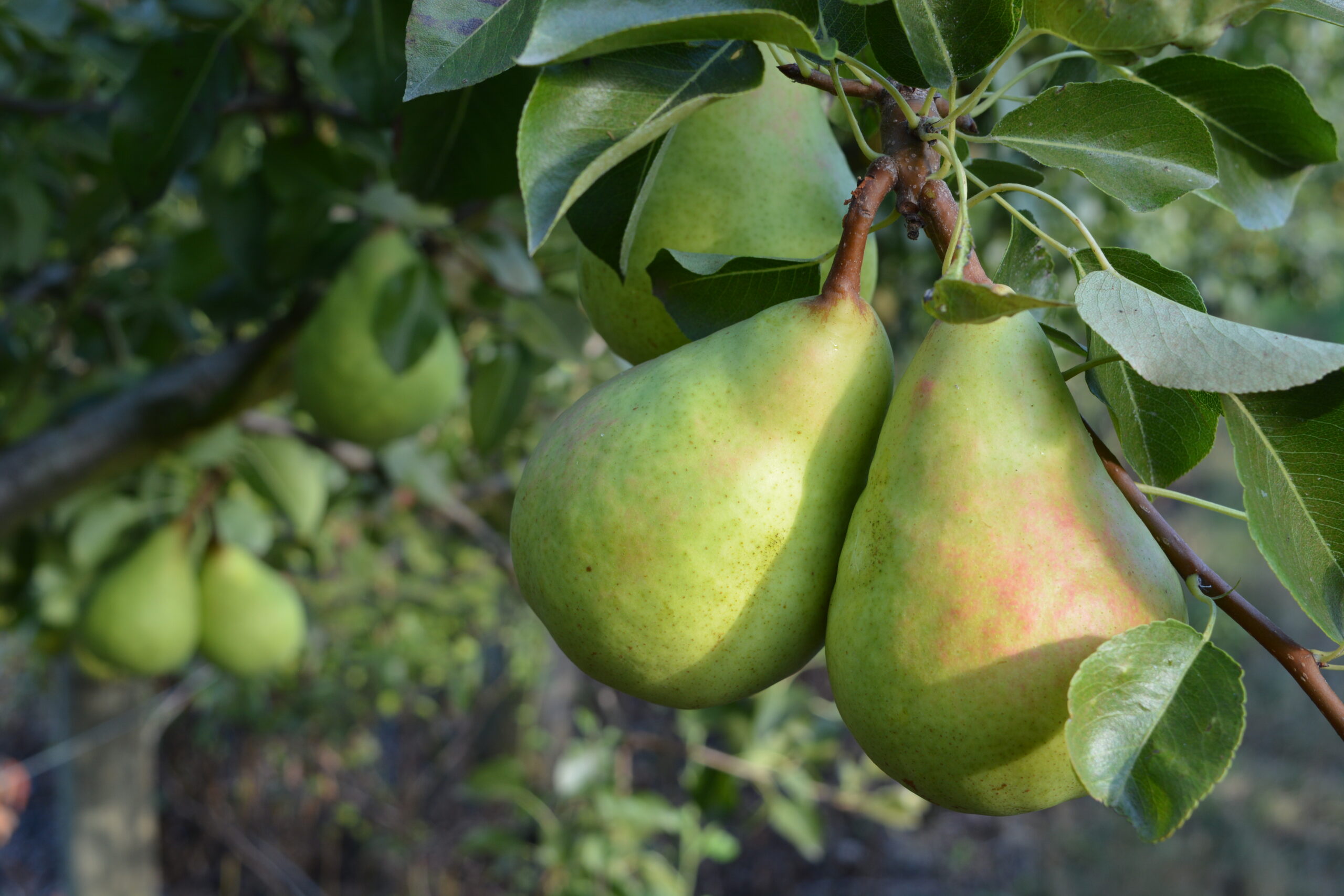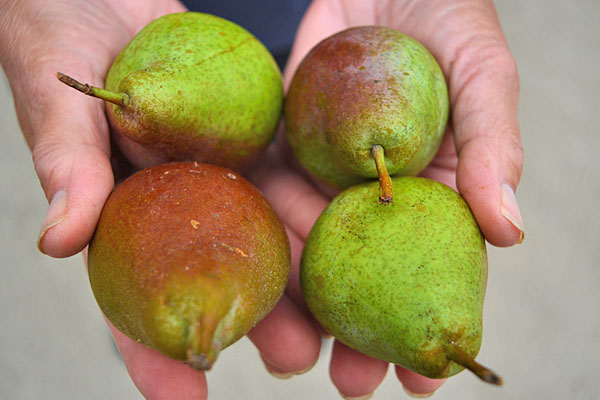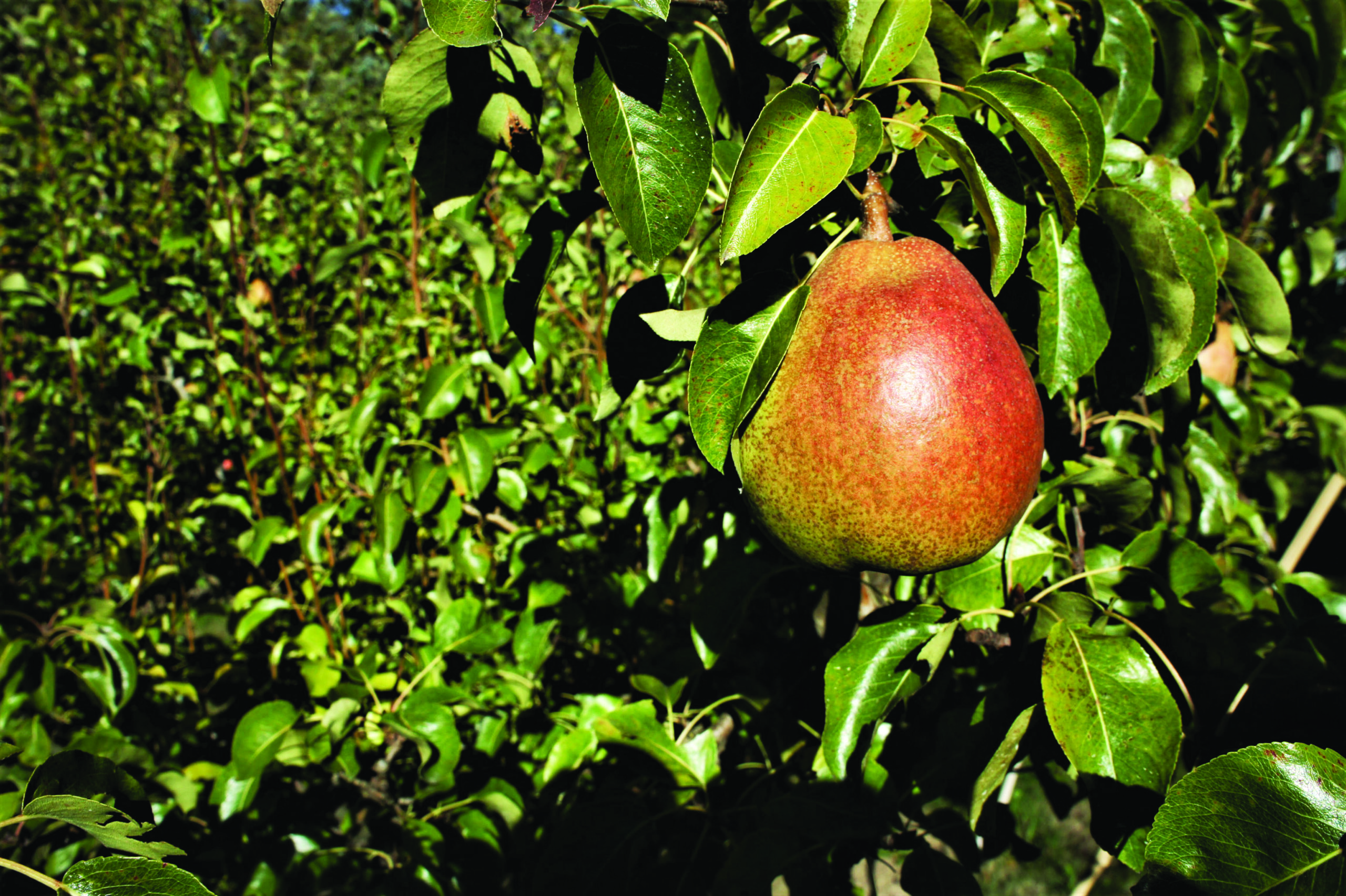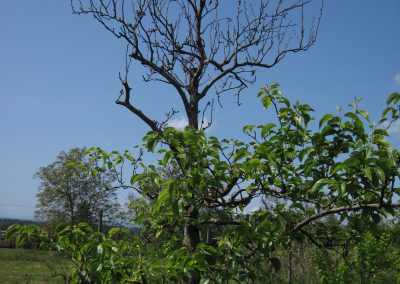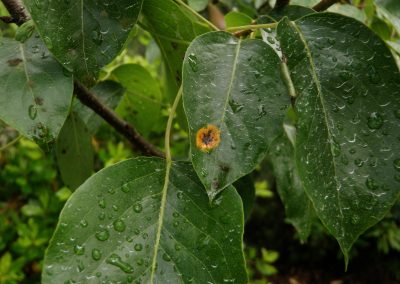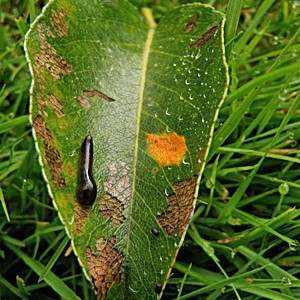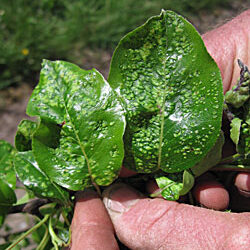Growing Pears
If you are just getting started, check out our fruit trees 101 page for beginner tips and terminology.
Pollination and Rootstocks
Pear Bloom Times
Choose your pollinizer from the same or adjacent group. For example, pears from GROUP 2 will pollinize varieties from GROUP 1, 2 or 3. GROUP 3 will pollinize GROUP 2,3 or 4.
Bloom time does not correspond to ripening time. Choose varieties that ripen at different times to spread out your harvest and check to make sure you have appropriate pollinizers.
Available Rootstocks
OHF-87 DWARF
FOR EUROPEAN AND ASIAN PEARS. Trees can be maintained at 8′-12′, suitable for high density plantings and trellis systems. Precocious and productive. Space 8′-10′. Trials have shown this rootstock to be more productive and hardier than Provence Quince. Hardy to Zone 4.
PROVENCE QUINCE DWARF
FOR EUROPEAN PEARS. Trees can be maintained at 8′-10′, suitable for espalier and trellis systems. Recommended spacing 8′-10′. Hardy to Zone 5
Very Early/Group 1
Nijiseiki Asian
Shinseiki Asian
Chojuro Asian
Mishirasu Asian
Hamese Asian
Early/Group 2
Kosui Asian
Maxie Hybrid
Mid-Season/Group 3
Doyenne de Juliette European
Armida European
Conference European
Hortensia European
Late/Group 4
Rescue European
Orcas European
Abbe Fetel European
Manon European
Ubileen European
Buerre Bosc European
Baby Shipova (self-fertile)
Shipova (self-fertile)
Very Late/Group 5
Comice European
Pruning and Training
Several years ago, we started experimenting with growing pears as an open center tree with good success. Open center training enables you to develop 3 to 4 leaders that will spread all the vigor out over numerous primary branches verses one central leader. The upright growth habit of pears lends itself to this system well; a central leader could quickly get too tall and unmanageable.
Select 3-4 branches even spaced on your new tree. Cut these back to no more than 12″ above the point of origin. These 3 or 4 branches now become your leaders. The objective in this first year is to stiffen up these branches to support the long-term structure of the tree. Spread these branches apart slightly if they are not growing out away from each other. To do so, anchor a bamboo pole or stake per leader into the ground and tie the branch to it using a stretchy material. (bottom left). Have your training poles all leaning 5-10% off the vertical and this will safely open the canopy for proper development in future years. In following years, continue to train and tie a new shoot from these branches up these poles.
If you are planting an unbranched whip the first year, make a pruning cut about 4″ above where you want the branches to begin. The lower you make this cut, the shorter your tree will be.
The next season, don’t prune those leaders back! Keep them tied so they can continue growing outward. You will also see lots of flower buds on your leaders. By the end of this second year, the leaders will have developed several weak wide-angled branches. Leave these unpruned for next year. If the tree does have any strong upright shoots (also called suckers as they “suck” energy from other parts of the tree), cut them out at their base in the dormant season.
Pears require dormant season pruning after getting established. Prune out any dead, damaged, or diseased wood or wood that is growing in toward the center of the tree. The goal is to promote even light exposure and air flow throughout the tree canopy. European pears produce fruit on wood that is at least two years old; Asian pears can also fruit on one year old wood. Both also produce fruit from spurs, short stout branches with many buds. Pruning guidelines specific to each type are outlined below.
Pears have strong apical dominance, meaning the branches have a very strong tendency to grow straight up. But this isn’t ideal for keeping circulation through the canopy to develop nice fruit! Leave a small number of moderate/weak upright shoots to absorb this tendency. The more vigor the tree has, the more shoots you should leave. General recommendation is at least 1 shoot per branch or one shoot every 3′-4′. Manage your crop on the leaders carefully. Don’t leave any fruit in the tops of those leaders as the weight may cause the leader to break. Branches may need to be propped up to support the amount of fruit; some varieties regularly produce 2lb fruits!
Pruning European vs Asian Pears
One main difference between European and Asian pears is that European pears do not fruit on one-year-old wood. This wood needs to be retained for another year to produce fruit. Inevitably, you will sometimes need to cut into one year old wood to achieve your pruning goals. Leave weaker one-year-old shoots if possible. Stronger one-year-old shoots often need to be pruned to keep the branch growing at the correct angle (right). While this will delay fruiting a year, the benefit to the structure of the tree outweighs the delay. Leave erect shoots missed from the year before if they have formed spurs at dormant pruning.
The wood of Asian pears is typically brittle and thin, so you must be careful as you train your tree. Because you can cut into one-year-wood on Asian pears without delaying fruiting, you can thin by pruning to some degree. The tips of one-year-old shoots should be pruned to strengthen the shoot. Shorter, thicker branches better support the weight of fruit. Make sure you keep the side shoots balanced on both sides of the leaders. Asian pears are famous for pushing all their shoot growth to one side and twisting the branch. Stubbing your main lower sets of branches every year will help reduce this twisting problem.
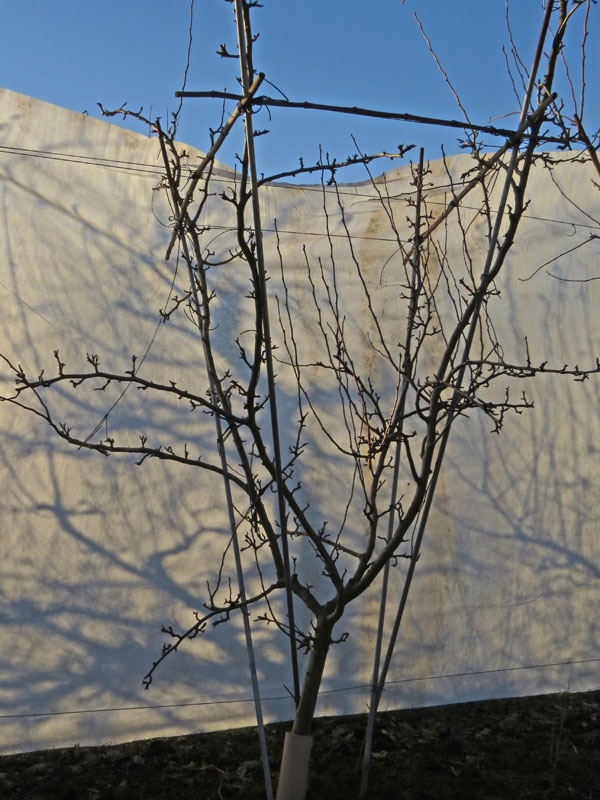
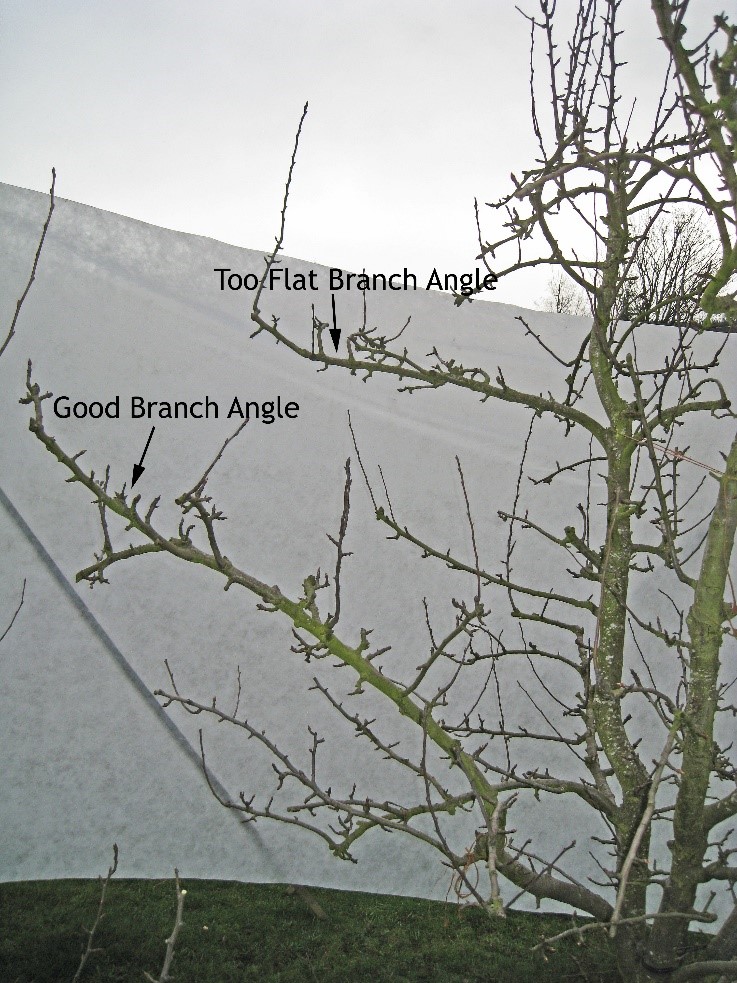
pests and diseases
Pseudomonas Dieback/Blossom Blast
This is a bacterial infection that affects both types of pears, though Asian pears are most susceptible. It thrives in damp cold climates and can cause leaf spots, blossom blast (browning/blackening of blossoms), shoot dieback, and cankers. Cankers will appear on the bark in light brown patches. Eventually, the outer bark and possibly some of the inner layers will fall away. To prevent Pseudomonas dieback, a copper spray can be applied at bud break. If you find signs of it on your tree, prune out those sections 6” below the start of the infection. Make sure to sanitize your tools to prevent spreading it.
Pear Trellis Rust
This is a recent disease in Western Washington but has been showing up with increasing frequency. As with most rust diseases, this disease has two host plants, fruiting pear trees and some kinds of juniper (Juniperus sp). Both must be present for the disease to complete its life cycle. The first signs on pear are bright orange spots on the leaves in late May (some years in late April). By late June, black dots appear in the center of the spots. From late August through October or November, grey hair-like projections resembling trellises emerge and release spores capable of infecting junipers. Infections are only obvious on junipers is during wet weather in April and early May. Swells or galls on the branches release an orange jelly-like mass of spores. These spores are capable of infecting nearby pear leaves. After the spores are released, the infection on juniper remains dormant until the next spring.
If this disease shows up in your orchard, you should first remove junipers within 300 feet of your pear trees if possible. Infected leaves, branches, fruit, and fallen debris should be removed and destroyed (not composted). Apply copper at leaf drop in the fall and again as pears break dormancy in spring. As a last resort, use a fungicide labelled to treat rust, such as Serenade or Monterey Complete Disease Control (both bacterial based OMRI listed fungicides), when you see the spots appear in early summer. Avoid planting ornamental pears or juniper species that are susceptible.
Pear Slug
This sawfly larvae appears usually in late summer and rasps (or scrapes) its way across the leaves. It is most common on young and stressed trees and will also appear on cherry trees. If you see it late in summer or early fall when leaves are getting ready to drop, ignore it unless it is totally defoliating your tree. If it appears early in summer, it can be hand-picked, or sprayed with horticultural soap, neem oil, or dusted with diatomaceous earth.
Blister Mite
Pear Blister Mite is a tiny mite that overwinters in pear bud scales, then emerges in spring to feed on the foliage of the tree. The feeding causes red blisters on the leaves. The mites will also feed on developing fruit. The most effective control is a combined spray of micronized sulfur plus oil at leaf fall and again at spring bud break. The timing is critical – during the growing season when you actually see the damage there are no effective controls available to the home orchardist.
Harvest and Storage
Unlike European Pears, Asian Pears are ripened on the tree. They will not continue to ripen off the tree! Pick your Asian Pears when the taste and texture are what you like. Asian Pears have thin, tender skins, and any bruising will shorten their storage capability. Handle the ones you want to store very carefully. This is why you see them in the markets in little foam nets.
Like apples, you should choose your best fruit for storage. A damaged pear could rot in storage and spoil the whole box. Pears like a little warmer than apples, and store best at 38°-40°F. Late ripening European pears such as Bosc and Comice will ripen only slowly in cold storage and should be brought to room temperature a few days or even a week ahead of use. Asian pears that have no nicks or bruising can be stored in refrigeration for up to 6 weeks. Check them frequently for spoilage.
